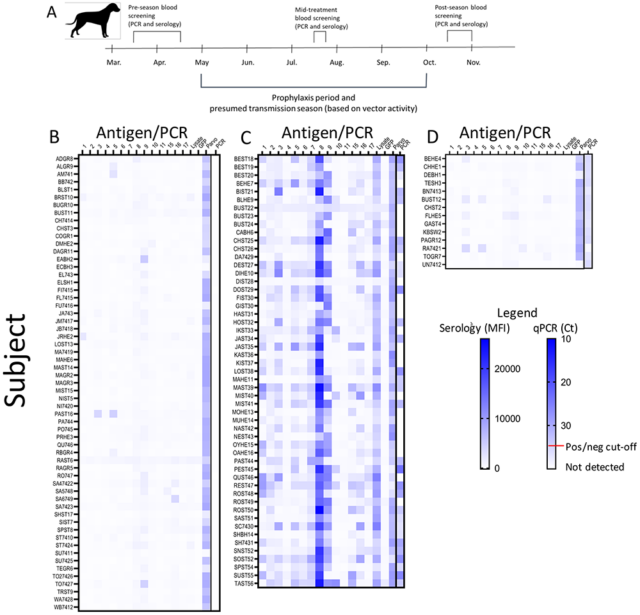Prophylactic low-dose… 2022 PLoS Neglected Tropical Diseases article
Title: Prophylactic low-dose, bi-weekly benznidazole treatment fails to prevent Trypanosoma cruzi infection in dogs under intense transmission pressure
Authors: Juan M. Bustamante, Angel M. Padilla, Brooke White, Lisa D. Auckland, Rachel E. Busselman, Stephanie Collins, Elizabeth L. Malcolm, Briana F. Wilson, Ashley B. Saunders, Sarah A. Hamer, and Rick L. Tarleton
Journal/Date of Publication: PLoS Neglected Tropical Diseases, 2022
DOI: 10.1371/journal.pntd.0010688
Objective: The focus of the study is the prevention of Trypanosoma cruzi infection (Chagas disease) in dogs, especially in environments with high transmission pressure, such as large dog kennels in southern Texas.
Type of study: Prospective
Conclusions:
- Low-dose, bi-weekly benznidazole treatment did not prevent new T. cruzi infections in dogs under intense transmission pressure.
- 22.4% of dogs developed new infections, with no significant difference between the treated and control groups.
- More potent or frequent dosing may be necessary, and while this regimen did not prevent infections, the impact on clinical disease severity was not assessed in this study.
Clinical application:
- Current low-dose benznidazole regimen is ineffective in preventing T. cruzi infections in dogs in high transmission areas.
- More aggressive or frequent prophylactic treatment might be necessary.
- Prophylactic treatment did not show immediate benefits but its impact on disease severity or progression requires further study.
- The study highlights the risk of Chagas disease in working dogs, even under vector control measures.
- Regular PCR and serological monitoring can help in early detection of T. cruzi infection.
- Seasonal variation in transmission risk may suggest the need for earlier prophylaxis initiation.
- Prophylactic failure underscores the need for alternative approaches, including vaccine development or enhanced vector control.
- Further studies in dogs are key as they can serve as sentinels for human health because they have a similar disease progression, share the same environment, and exposure risks as humans.

